As we reported late Tuesday, after Defense Distributed took 3D printer gun plans off of their website pursuant to a preliminary injunction, another site, www.codeisfreespeech.com, popped up, containing all of the files that had been on Defense Distributed’s site. Behind the site are four California-based Second Amendment advocacy groups and a number of anonymous individuals.
The next day, Amazon Web Services issued a takedown order, and gun control nuts were doing everything they could to shut that site down, too.
Starting Tuesday, the four advocacy groups and many, many individuals shared the URL on Facebook, Instagram, Twitter, and over email. There wasn’t any blowback – until late Thursday. Suddenly any Facebook or Instagram post that contained a link to www.codeisfreespeech.com was removed, and the person posting received a message from Facebook informing them of that fact. People were tweeting that they couldn’t even send the URL via Facebook messenger. I tried it myself, and got this popup message:
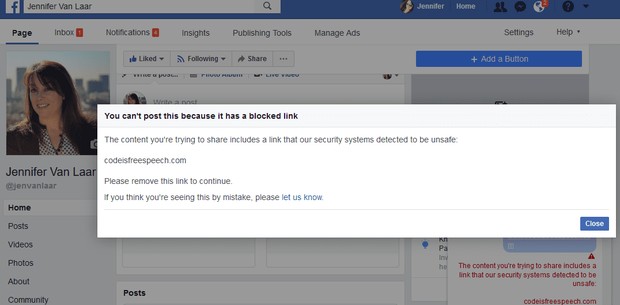
Within the body of the message itself, it said, “The content you’re trying to share includes a link that our security systems detected to be unsafe. Please remove this link to continue.” So users aren’t given an option to continue until the link is removed.
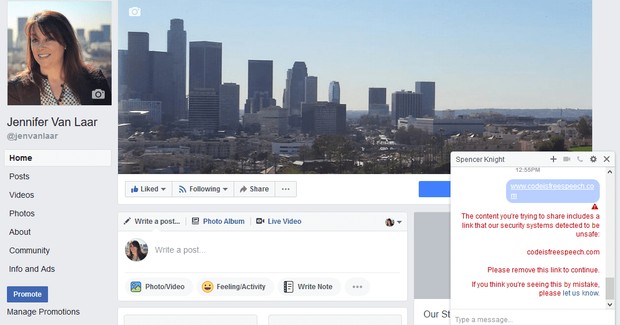
That’s the type of message one would associate with a site that steals people’s credit card numbers or is infested with malware. But, Facebook didn’t use the same reasoning with everyone.
Not on farcebook it isn't. #CodeIsFreeSpeech pic.twitter.com/b4jlV2qq9a
— Alterity (@JoshAlterity) August 3, 2018
To this person, they simply said the site was spam. To the person below they said “it looks like spam and doesn’t follow our community standards.”
https://twitter.com/bryanccarmody/status/1025231313886883841
But they told this user that the link is malicious, and they were blocking it “for your safety.”

Instagram user Ron Swanson (gee, for some reason I don’t think that’s his real name!) got this message when he tried to post the URL in his Instagram profile.
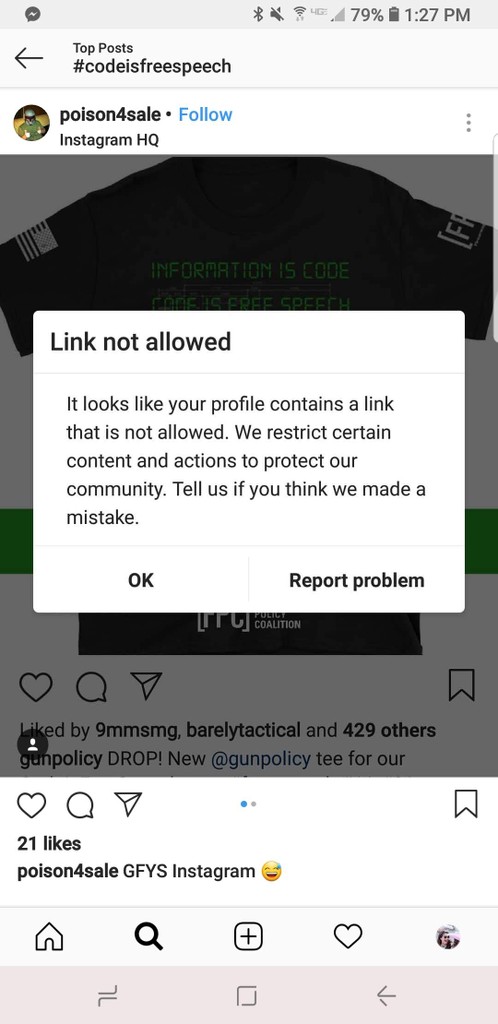
He later found a way to get around the link ban, at least temporarily.

Another Instagram user was unable to post the link as a comment.
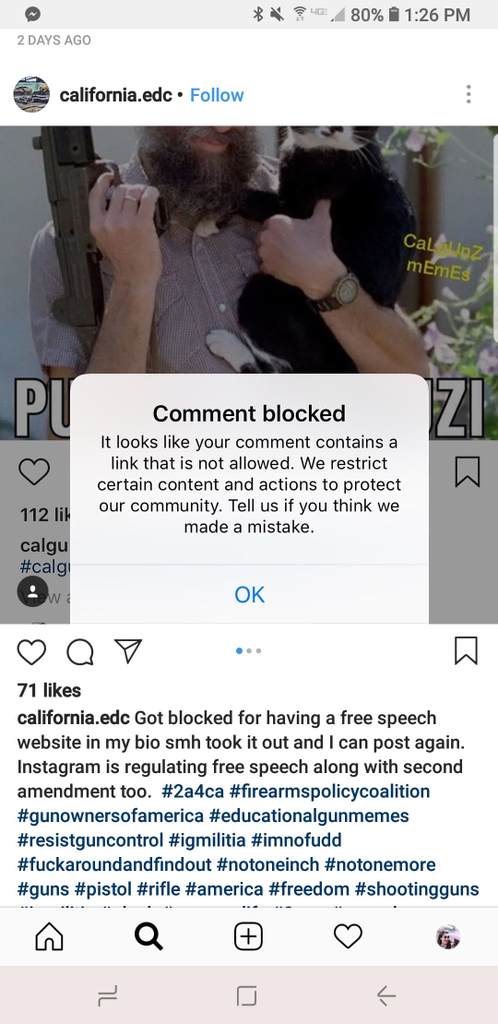
Facebook and Instagram weren’t the only platforms making it difficult for people to access the plans. To try to get around the link blockage, Firearms Policy Coalition, the largest of the four nonprofits sponsoring www.codeisfreespeech.com, posted a QC code that linked to the site. A supporter of the page received an odd message when attempting to access the site through Google and posted the screenshots on FPC’s Facebook page.
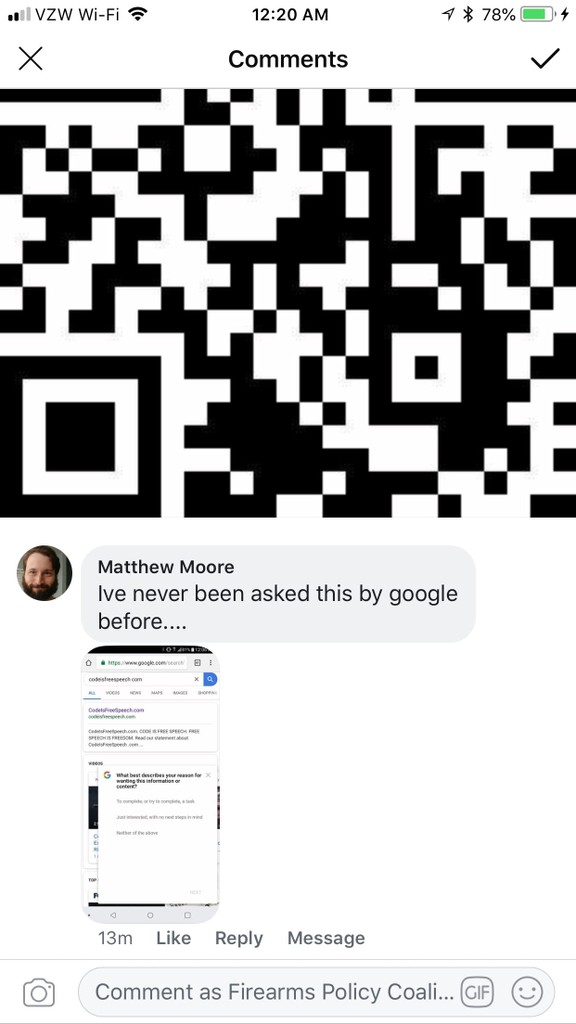
A larger version of the screenshot in the comment:
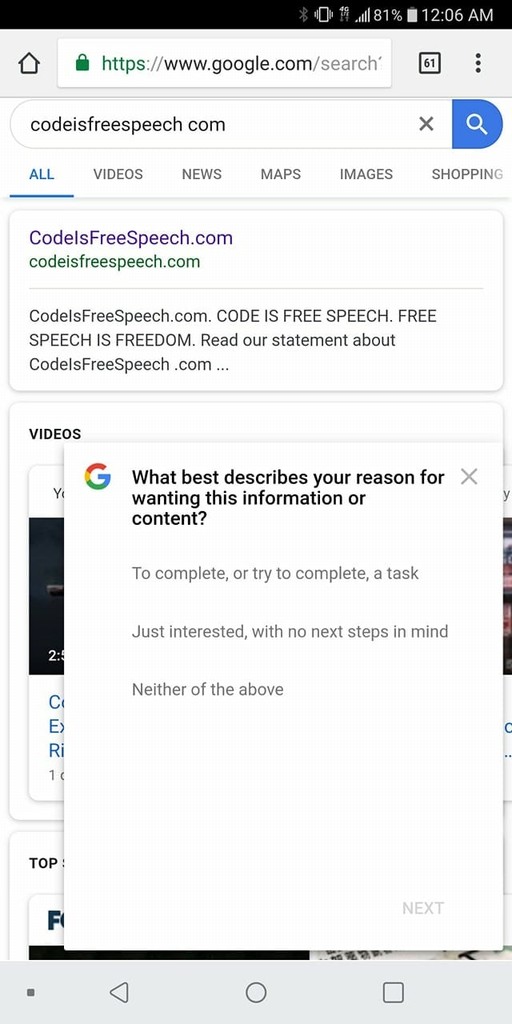
Brandon Combs, President of Firearms Policy Coalition, said their site is secure and shouldn’t raise any red flags of being a malicious site. He asked, “If Amazon, Facebook, Google, and Microsoft control the data, what difference does Net Neutrality make?”
I attempted to contact Facebook’s spokespeople to ask them a few questions about this, but have not received a reply. It doesn’t make sense that different Facebook users would receive different reasons for the URL being blocked. A number of people who received these notices told me they replied to Facebook that the site wasn’t spam, or wasn’t malicious, and haven’t heard anything back. At some point it seems that a human would have to look at this and determine whether or not the site was malicious – and that a Facebook employee would reach out to any of their advertisers (the gun rights groups all advertise on Facebook) who had posted the link and informed them of any concern that the link contained malicious material.
In case they’re reading, here are some questions for Facebook:
1. What is your process for deeming a site “malicious” or “harmful”? What red flags do you look for?
2. Why isn’t there a consistent reason you’re blocking the URL?
3. Did a human employee make the call to block the URL?
4. What criteria were used in deciding to block the URL?
I will update the article if I receive a reply from Facebook. Until then, FPC is trying a different tactic – printing the URL on a meme posted to their Facebook page.
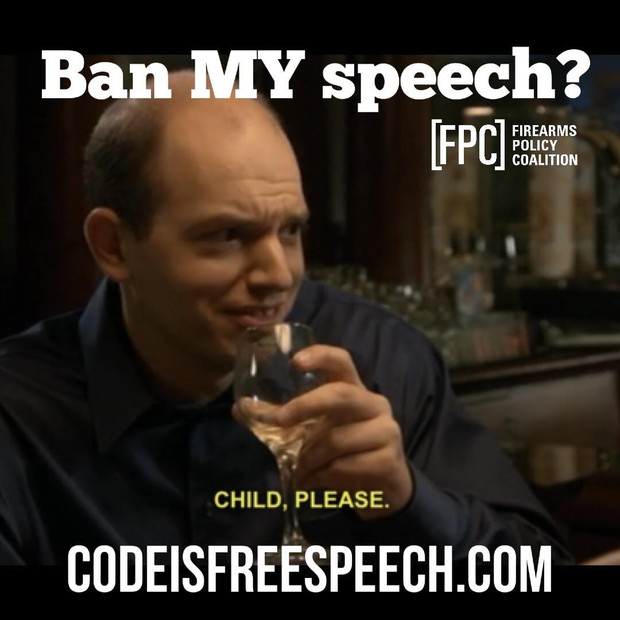
You can’t stop the signal, Mal.









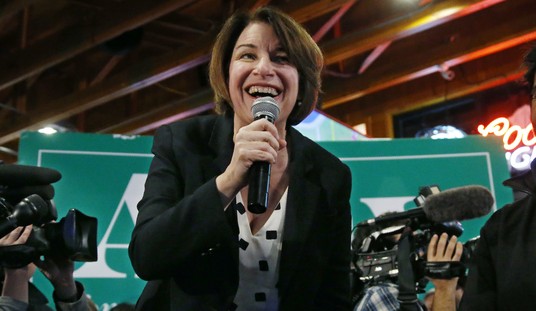



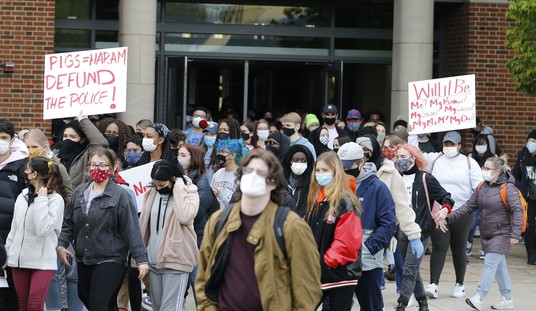

Join the conversation as a VIP Member